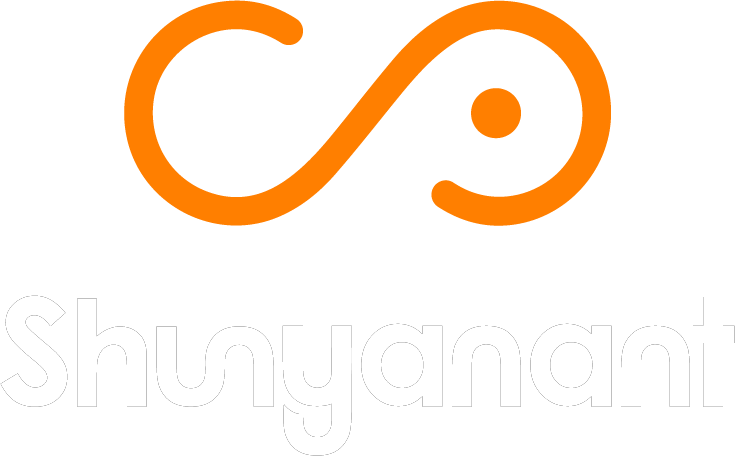Latest Corporate Video Production Trends in 2025: How Brands Are Innovating?
Videos are a powerful tool for shaping brand identity, promoting company culture, and building trust with consumers and partners alike. As consumer behavior continues to evolve, corporate videos and their latest trends have become an essential part of how brands communicate, engage, and connect with their audiences.
The rise of social media, mobile devices, and streaming platforms has drastically changed the way people consume content. It is pushing brands to innovate and create videos that stand out in a crowded space.
Corporate videos are evolving into interactive, immersive, and highly personalized experiences. The emphasis is now on creating authentic connections through storytelling, making sure the content speaks directly to the audience’s emotions and needs.
Driven by AI, interactive formats, and ethical storytelling, these trends are shaping how brands connect with audiences across channels and platforms. In the blog, we explore key trends with real-world examples.
TL; DR
- Better ROI through personalization— AI tools allow rapid, scalable, and deeply resonant video creation.
- Conversion power— Shoppable formats bridge the gap between inspiration and action.
- True engagement— Interactive, live formats turn viewers into participants.
- Authenticity wins— CSR and UGC videos align with values-driven audiences.
- Sustainability signals— Eco-conscious production enhances brand trust and relevance.
Table of Contents
- 6 Corporate Video Production Trends
- Conclusion: Why These Trends Matter for Corporate Videos?
- Frequently Asked Questions (FAQs)

6 Corporate Video Production Trends
Trend 1: Personalized Video Experiences
AI-powered personalization is transforming corporate storytelling, making each viewer feel seen and valued. Brands can create videos tailored to individual viewers and enhancing engagement.
Example 1 – The Original Tamale Company (LA):
A family-owned restaurant used ChatGPT to script and narrate a humorous video that went viral with 22 million views in three weeks. This example showcase how small businesses can leverage AI for fast and impactful storytelling.
Example 2 – Netflix’s Personalized Trailers:
Netflix’s recent patents reveal AI systems that tailor trailers to individual preferences, highlighting preferred actors, themes, or genres. It will pave the way to revive interactive and personalized content.
The above examples illustrate how personalization elevates relevance, boosting engagement and comprehension.
Trend 2: Shoppable Videos: Driving Seamless Conversions
Integrating e-commerce with shoppable videos enable viewers to click on products within the video, making the buying process seamless. Turning videos into storefronts, let viewers purchase in real time.
Example 1 – Sephora:
Beauty giant Sephora leverages cinematic shoppable videos. Viewers browse products showcased in ad films and buy instantly, bridging storytelling and commerce seamlessly. These interactive videos achieved 47% engagement, 9% click‑through rate, and 34% of CTA clicks went straight to “Add to Cart”.
Example 2 – Interactive Product Catalogs & Virtual Events:
Medium-sized brands employ shoppable videos in dynamic catalogs or virtual live shopping events. (e.g., a makeup tutorial where viewers can shop featured products as the demo plays).
As attention spans are low, shoppable videos provide both inspiration and efficiency.
Trend 3: Interactive & Live Streaming
Interactivity is reshaping engagement. Engaging viewers through live streams & interactive videos is becoming popular, offering real-time interaction & a more immersive experience.
Example 1 – Panasonic’s AG‑CX20 Live Streaming Tool:
Panasonic’s 4K camcorder with ultra‑low‑latency (SRT‑2) supports live and interactive corporate broadcasts, concerts, and sports, making real-time engagement seamless.
Example 2 – Twebcast’s Interactive Live Streams:
Sweden-based platform Twebcast uses nanoStream Cloud to deliver ultra‑low‑latency (sub‑second) live video streaming combined with interactive tools such as chat, polls, Q&A, real‑time reactions, and gamification. This setup makes virtual events deeply engaging, facilitating seamless real-time engagement for corporate audiences.

Trend 4: Sustainability & CSR
Highlighting sustainability & corporate social responsibility in videos resonates with audiences who value ethical & responsible business practices. Audiences increasingly value companies that showcase responsible practices and social impact.
Example – Lego’s “Protect the Planet” CSR Video:
Lego released the “Protect the Planet” CSR video, produced in partnership with WWF. It explains the company’s efforts to reduce energy consumption in its manufacturing and offices. The vibrant, visually engaging video clearly communicates Lego’s environmental responsibility and reinforces the brand’s commitment to sustainable business practices.
Trend 5: User-Generated Content (UGC)
Encouraging customers & employees to create and share their own videos can build authenticity & trust, making the brand more relatable.
Example 1 – GoPro – “Anything Awesome Challenge”:
GoPro runs its “Anything Awesome Challenge,” inviting users to submit action-packed videos showcasing adventures or creative content shot with GoPros. The brand curates the best entries, offering prizes and exposure while generating unique, authentic and community-driven video content.
Example 2 – Coca‑Cola – “Share a Coke” Campaign:
Coca‑Cola’s “Share a Coke” campaign encouraged fans to share personalized moments via photos and videos using #ShareACoke. This simple and engaging UGC initiative went viral, allowing the brand to curate social content that felt personal, warm, and authentically consumer driven.
Trend 6: Eco-Friendly Production
Sustainable video production practices are becoming more important, with companies focusing on reducing their environmental impact. Practices like virtual sets, minimal travel, and green equipment (e.g., LED lighting, digital workflows) are being adopted by various companies.
Example – Wild (London) – Sustainable Video Production:
Wild, a London‑based video production company, uses the carbon‑tracking tool AdGreen to measure and offset emissions. Their sustainable production practices include energy‑efficient equipment, minimal travel through remote collaboration, waste reduction, and paper‑less workflows. They demonstrate how environmental stewardship can be integrated seamlessly into high‑quality video production.

Conclusion: Why These Trends Matter for Corporate Videos?
The trends we see today highlight an exciting shift towards more dynamic and engaging content. With the right strategy, corporate videos can be a game-changer, driving brand awareness, customer loyalty, and even employee advocacy.
Corporate video is undergoing a transformation: once primarily polished presentations, videos are now AI-empowered, interactive, immersive, and value-driven. As we move forward, videos will continue to be a vital tool for businesses looking to differentiate themselves and make a lasting impact.
Embrace these trends to stay relevant, increase brand engagement, and enhance ROI.
Read More
6 Practices for Sustainable Video Production: Creativity with Climate Responsibility
The Power of a Brand Story: Connecting, Engaging & Inspiring
10 New Trends in Video Production to Look Out for in 2025
Frequently Asked Questions (FAQs)
Q1- What is the trend in video production in 2025?
AI personalization, shoppable formats, interactive/live video, CSR storytelling, UGC, and eco-friendly workflows are the latest trends you can find in video production in 2025.
Q2- What is the future of AI in video production?
AI is evolving from supporting roles to creative partners by generating personalized scripts, avatars, and video journeys. AI is being used extensively for producing videos. Viral AI videos like the IKEA ad showcase that AI will heavily integrate into video production in the future.
Q3- What is the future of video?
Expect videos to be hyper-personalized, shoppable, interactive, sustainable, and human-first, matching user preferences, values, and attention spans. AI will dominate the field of video production, but authentic content will be more sought after and valued.


